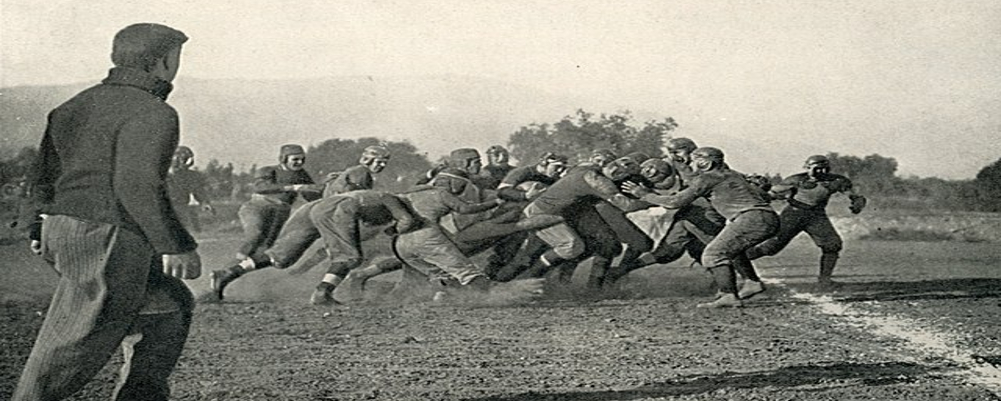Schulz, who stood 6’-4' tall and weighed in at 245 pounds, unfortunately had to miss the 1906 season as he had dropped out of school for financial reasons. However, his passion for his education and football drove Germany to work hard in a Fort Wayne steel mill to raise funds to pay for his final two years of tuition at the University. This drive to succeed was seen on the gridiron as well. He is credited with two innovations in his position. Schulz invented the spiral snap; the long snappers always sent the ball end-over-end to the awaiting backs, who had to pay attention to the oncoming ball to field it cleanly, thus taking an extra moment off their reaction time to start their momentum.
His other major contribution was that centers always played along the line on defense before Schulz. Still, the innovative Germany dropped back to become a roving center, therefore creating football's first linebacker! The colorful newspaper journalist Grantland Rice painted a great picture of Germany Schulz when he proclaimed in 1928: "Schulz stands as the fastest giant who ever played football, a human bulwark fast enough to tackle at either end, as he brought down his man after the manner of a hawk snaring a quail."
The College Football Hall of Fame proudly placed a display in honor of Germany Schulz in their legendary museum in 1951. After Schulz played his last collegiate down, he served as assistant coach at Michigan, Wisconsin, Tulane, and Kansas State and, in 1923, as head coach for one season at Detroit University.




